HTC One max Review - It's Huge
by Brian Klug on October 28, 2013 10:00 AM EST- Posted in
- Smartphones
- HTC
- Mobile
- One
- Snapdragon 600
- Android 4.3
- One max
The performance section is probably a good place to talk about one of the elephants in the room, and that’s the SoC inside the One max. The One max includes a Snapdragon 600 APQ8064T SoC, which consists of 4 Krait 300 cores running at up to 1.7 GHz, and Adreno 320 GPU, all built on TSMC’s 28nm LP process. This is the same SoC that shipped in the original HTC One, and the same 1.7 GHz bin as well. There have been three major variants or families of APQ8064(T) to date. There first was the option for the earliest 1.5 GHz Snapdragon S4 Pro version (AA suffix), the 1.7 GHz “8064T/Pro” variant in the HTC One and One max (AB suffix) which began the Snapdragon 600 branding, and finally the 1.9 GHz CPU and 450 MHz GPU variant we first saw in the SGS4 (AC suffix). Qualcomm usually has a number of revisions of its silicon, and with APQ8064 we saw quite a few. As an aside, expect similar with 8974 or Snapdragon 800.
There’s nothing wrong with the 1.7 GHz Snapdragon 600 variant, it was and still is a great performer, but the reality is that HTC falls behind on its hardware platform with the One max by not going to Snapdragon 800 (MSM8974) like the rest of the competition (Note 3, ASUS Padfone Infinity 2014, LG G2, Nexus 5, and so on). So much of the SoC performance and power story right now is gated by process, and 8974 moves to TSMC’s high-k metal gate 28nm HPM process which affords some clock headroom (up to 2.3 GHz) and lower power consumption at lower performance states for Krait 400 (which is essentially 300 implemented on that new process). 8974 also brings a beefier Adreno 330 GPU with more ALUs and higher clocks, in addition to the new modem IP block, but I won’t go over all of that.
It’s pretty obvious to me that the One max stays with the same SoC used in the original One for a few reasons which ultimately boil down to cost and margin. It obviously means HTC can share the same SoC between the One and One max, and since it’s later in APQ8064’s lifespan I would suspect HTC was able to secure good pricing for it. Having closer shared hardware platform means about the same software stack on top of it, and the same source tree from Qualcomm (BSP) for building and testing ROMs. This makes the software maintenance and update costs lower for the One max. I won’t speculate too much beyond that, but I wouldn’t be surprised if the One max started out an 8974 device but later became an 8064 device, given its timing.
| I Can't Believe I Have to Regularly Update This Table | |||||||||||
| Device | SoC | Cheats In | |||||||||
| 3DM | AnTuTu | AndEBench | Basemark X | Geekbench 3 | GFXB 2.7 | Vellamo | |||||
| ASUS Padfone Infinity | Qualcomm Snapdragon 800 | N | Y | N | N | N | N | Y | |||
| HTC One | Qualcomm Snapdragon 600 | Y | Y | N | N | N | Y | Y | |||
| HTC One mini | Qualcomm Snapdragon 400 | Y | Y | N | N | N | Y | Y | |||
| HTC One max | Qualcomm Snapdragon 600 | Y | Y | N | N | N | Y | Y | |||
| LG G2 | Qualcomm Snapdragon 800 | N | Y | N | N | N | N | Y | |||
| Moto RAZR i | Intel Atom Z2460 | N | N | N | N | N | N | N | |||
| Moto X | Qualcomm Snapdragon S4 Pro | N | N | N | N | N | N | N | |||
| Nexus 4 | Qualcomm APQ8064 | N | N | N | N | N | N | N | |||
| Nexus 7 | Qualcomm Snapdragon 600 | N | N | N | N | N | N | N | |||
| Samsung Galaxy S 4 | Qualcomm Snapdragon 600 | N | Y | Y | N | N | N | Y | |||
| Samsung Galaxy Note 3 | Qualcomm Snapdragon 800 | Y | Y | Y | Y | Y | N | Y | |||
| Samsung Galaxy Tab 3 10.1 | Intel Atom Z2560 | N | Y | Y | N | N | N | N | |||
| Samsung Galaxy Note 10.1 (2014 Edition) | Samsung Exynos 5420 | Y(1.4) | Y(1.4) | Y(1.4) | Y(1.4) | Y(1.4) | N | Y(1.9) | |||
| NVIDIA Shield | Tegra 4 | N | N | N | N | N | N | N | |||
The HTC One max, like a ton of other devices, continues to employ a CPU optimization “boost” feature which plugs in all the CPU cores and increases clocks to their maximum upon detection of certain benchmarks. It’s sad that this needs to be a regular disclosure for each handset release, since the narrative will likely be the same for the near future, but yes the One max does this.
Given product development cycles and how long it takes software in the Android landscape to make it through the chain from internal OEM testing to operator test approval and finally hitting devices, I expect we’ll see a pipeline of devices with this “feature” enabled for a while before it changes, even if we could change every OEM’s mind about it right now. I’m starting to understand more about the origin of these optimizations, the list of APKs they detect and boost for, and what party is ultimately responsible, but that’s a story for another day.
CPU
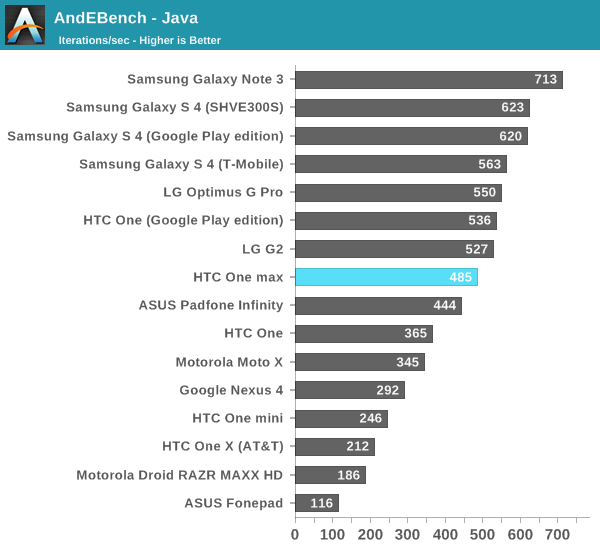
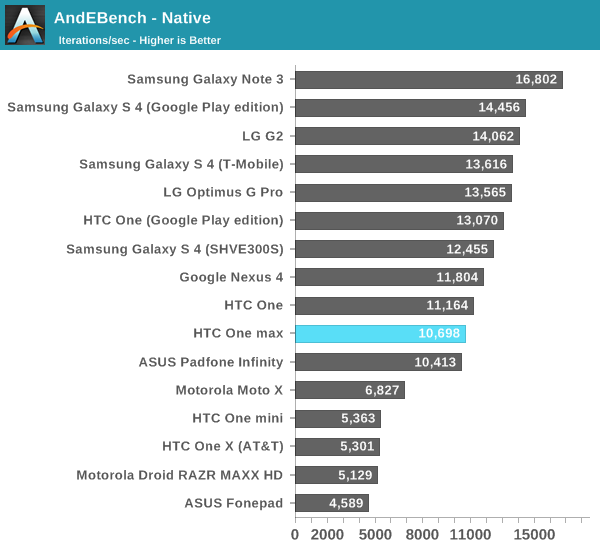
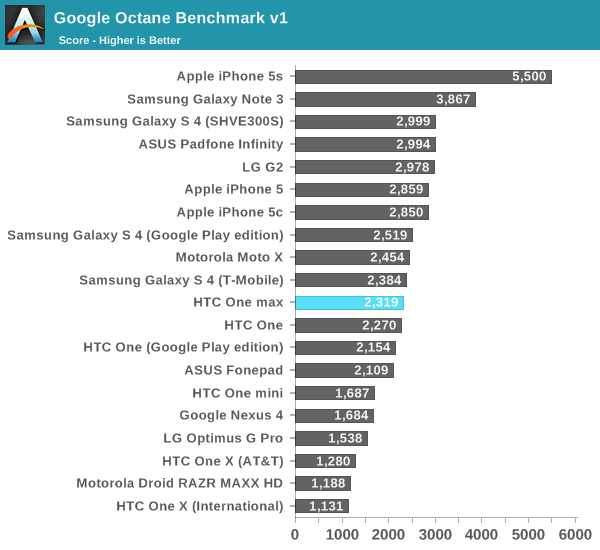
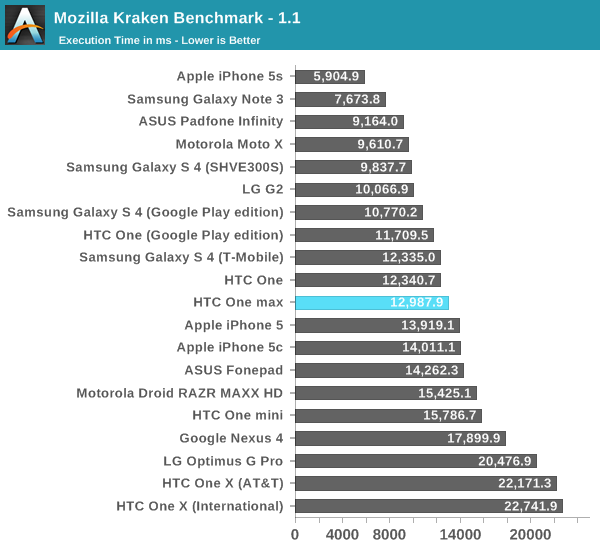
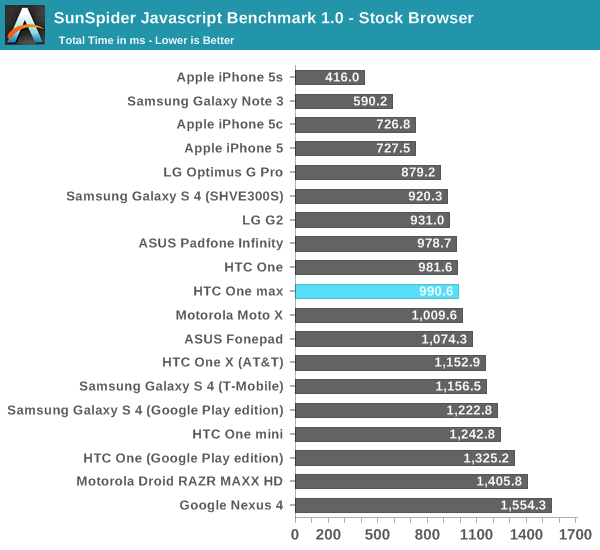
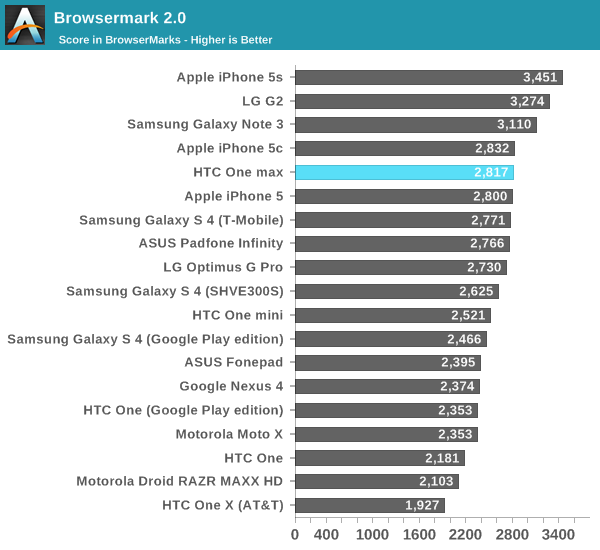
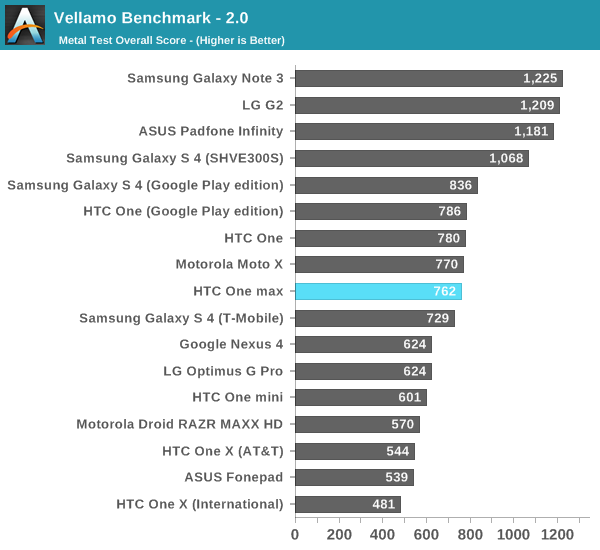
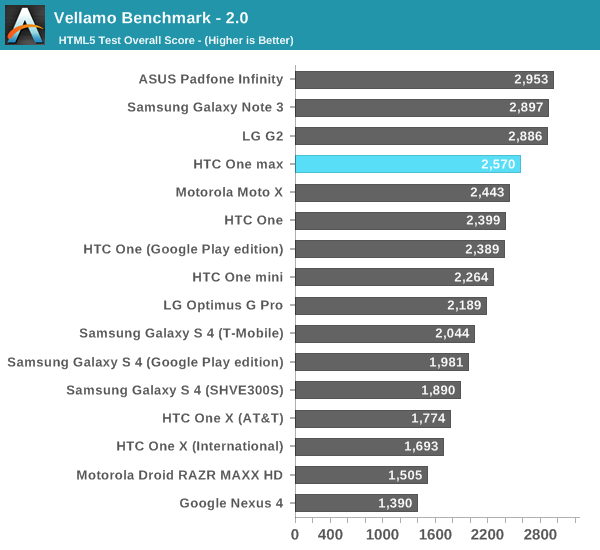
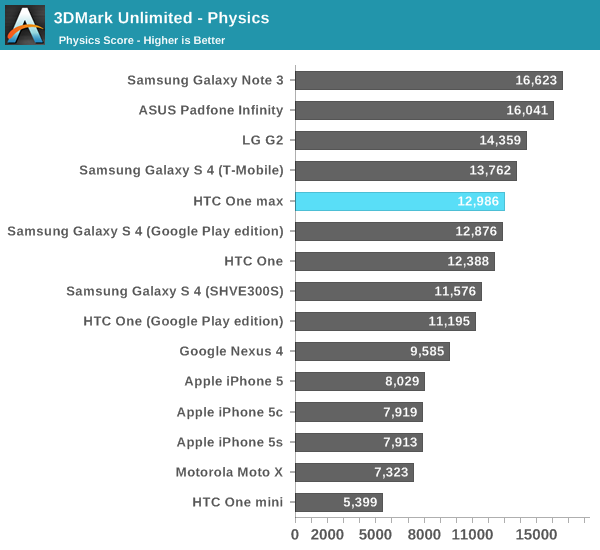
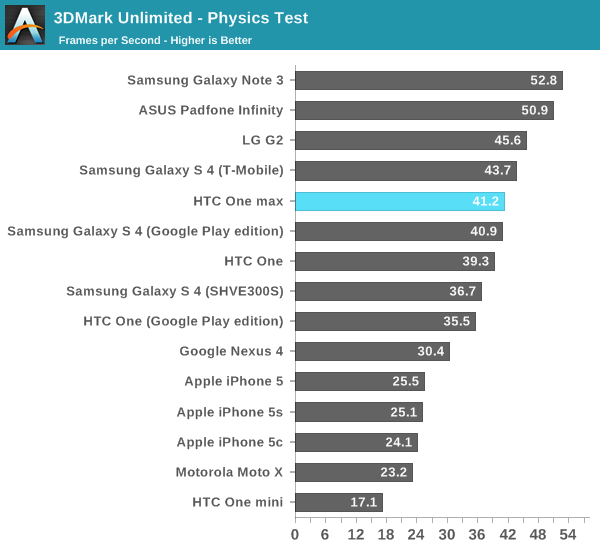
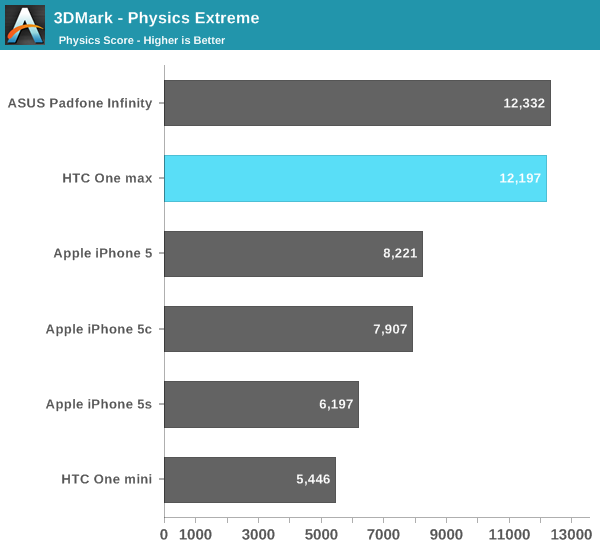
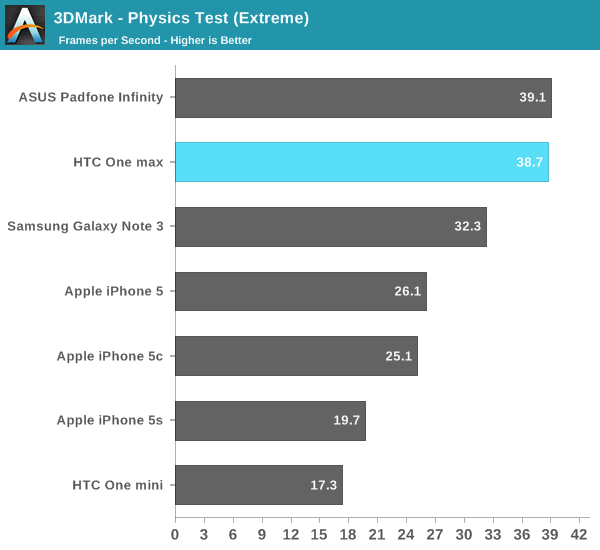
GPU
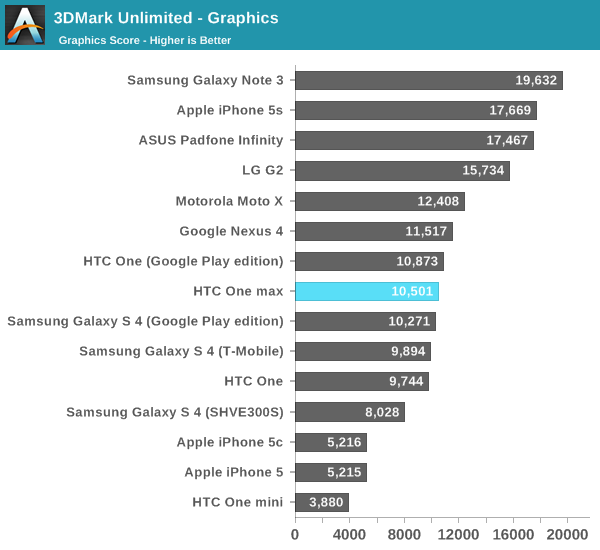
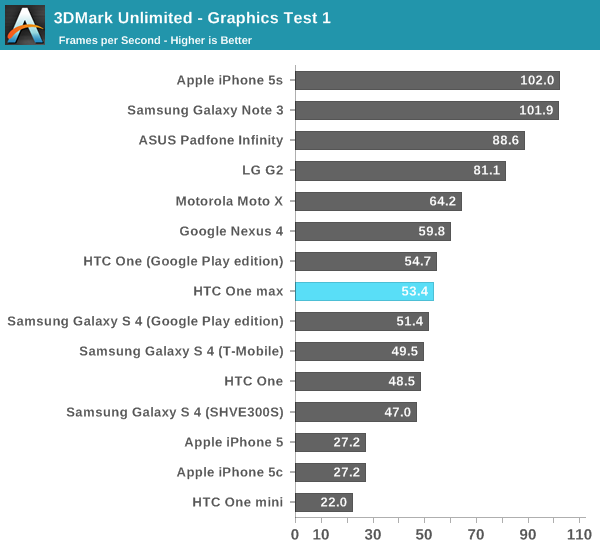
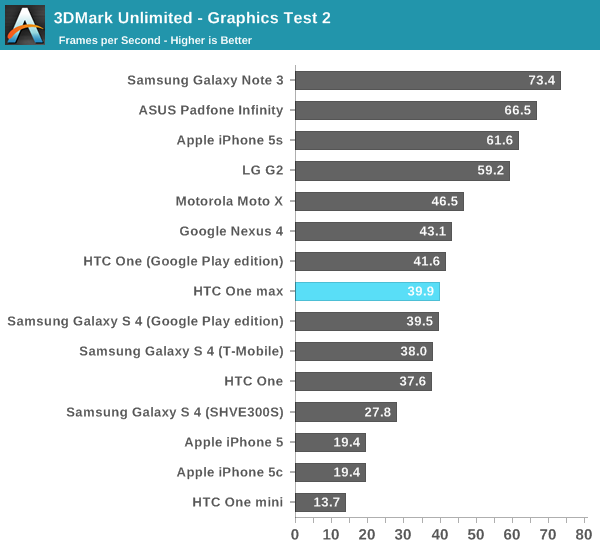
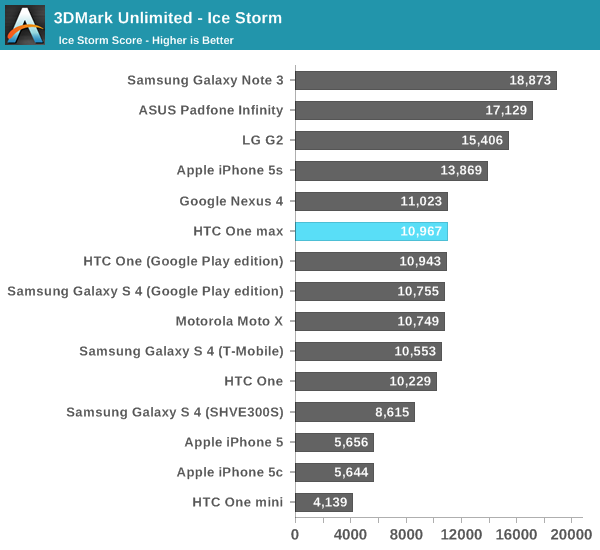
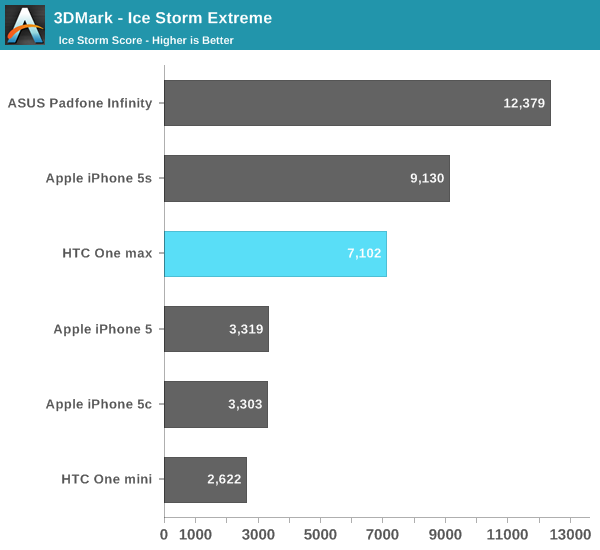
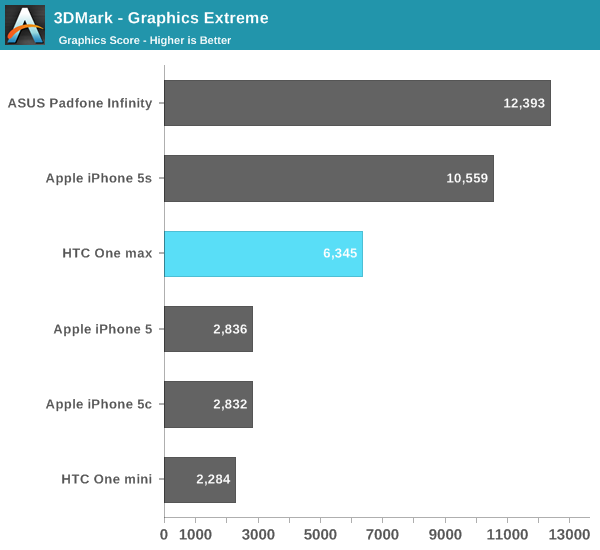
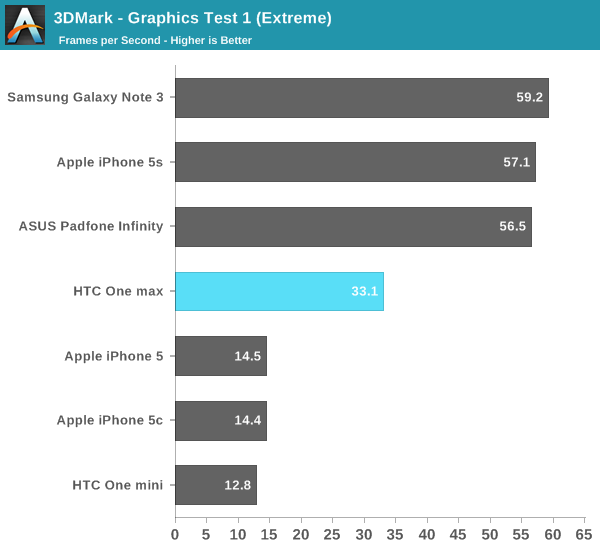
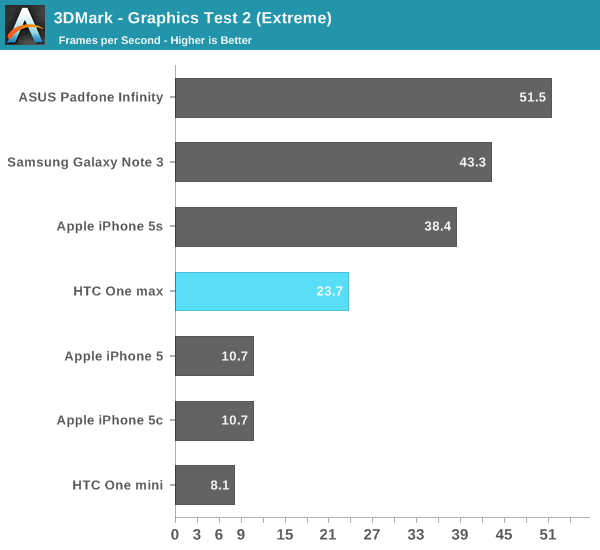
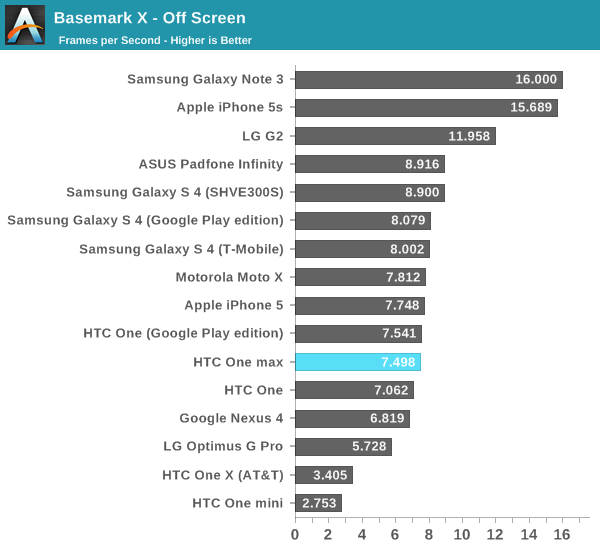
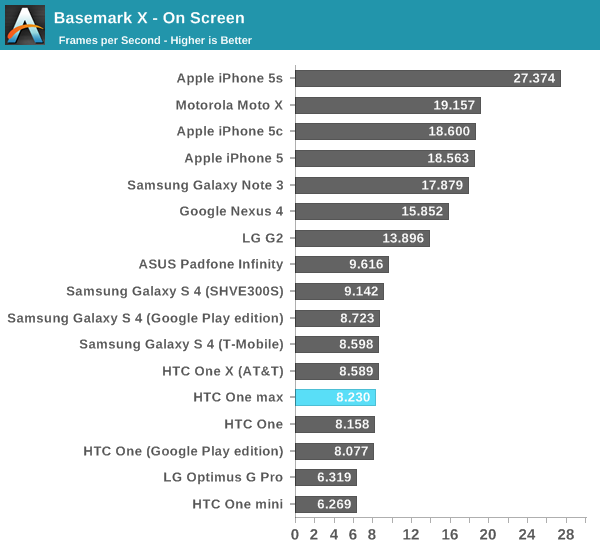
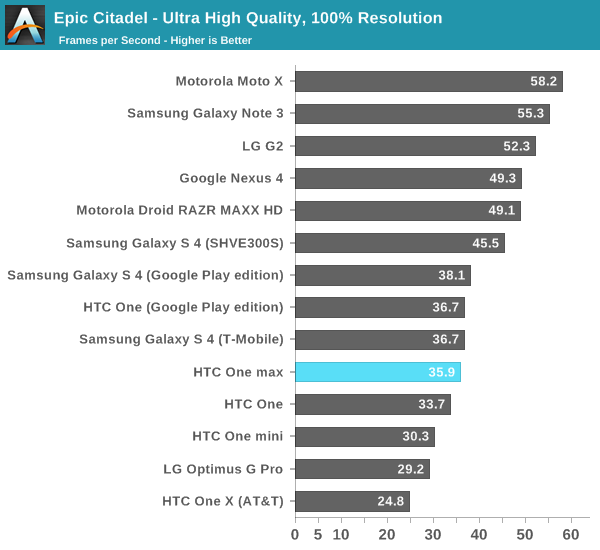
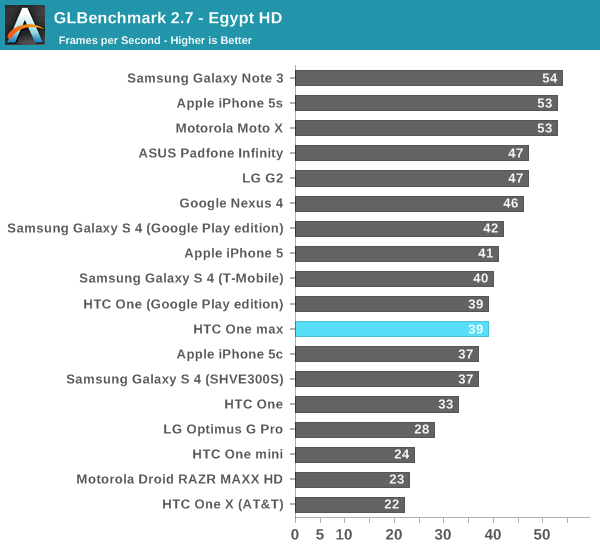
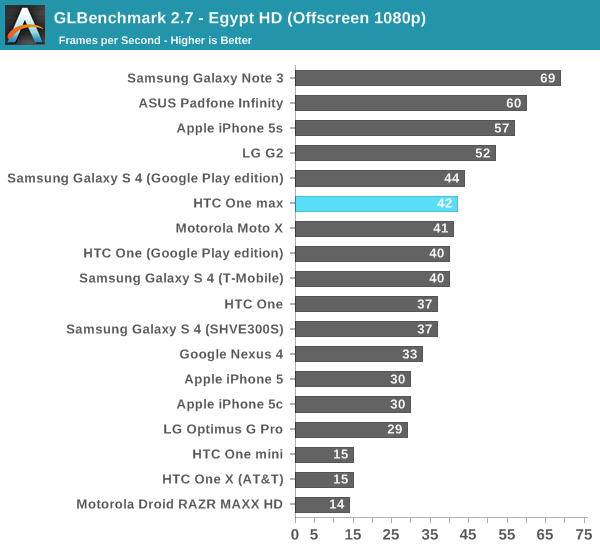
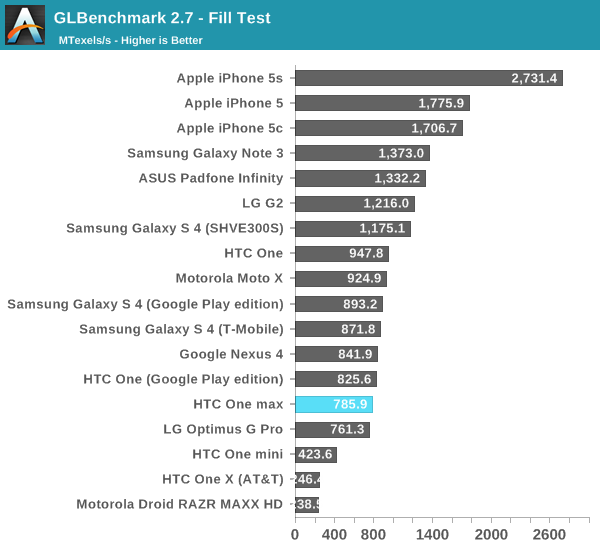

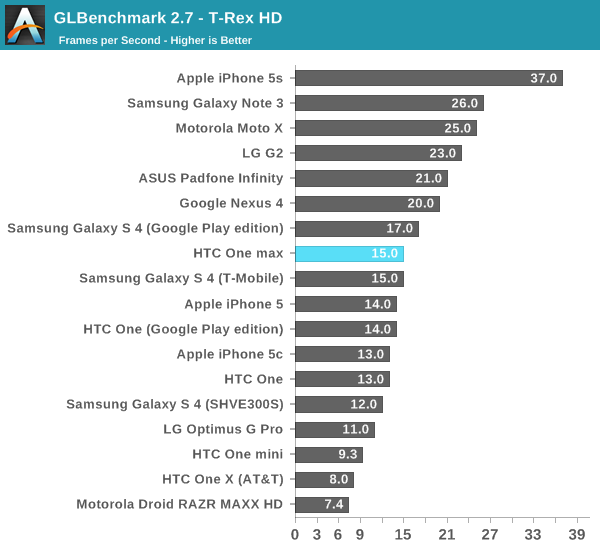
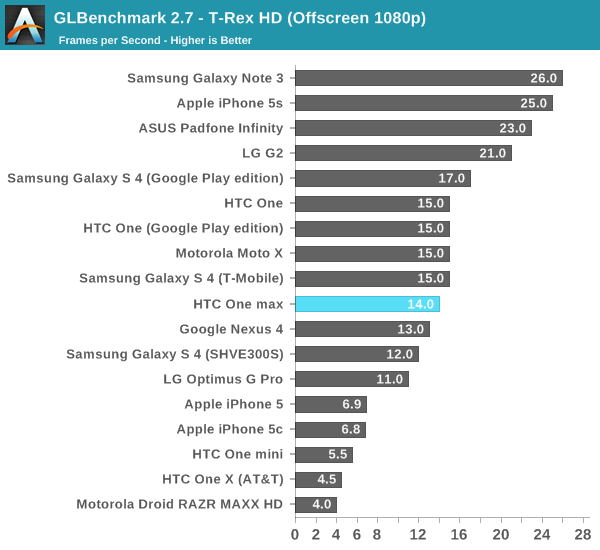
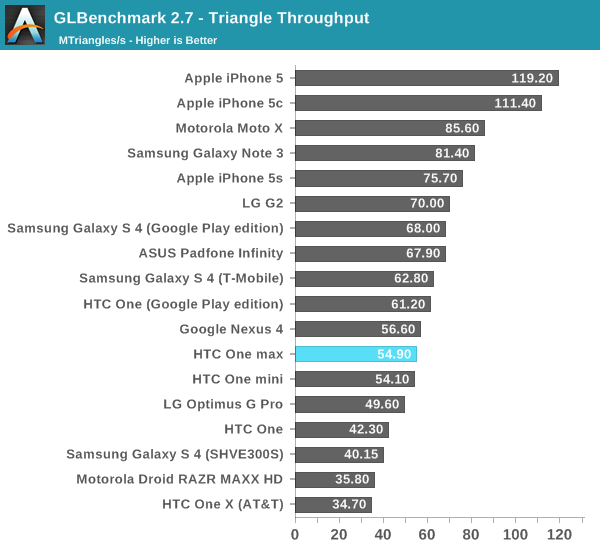
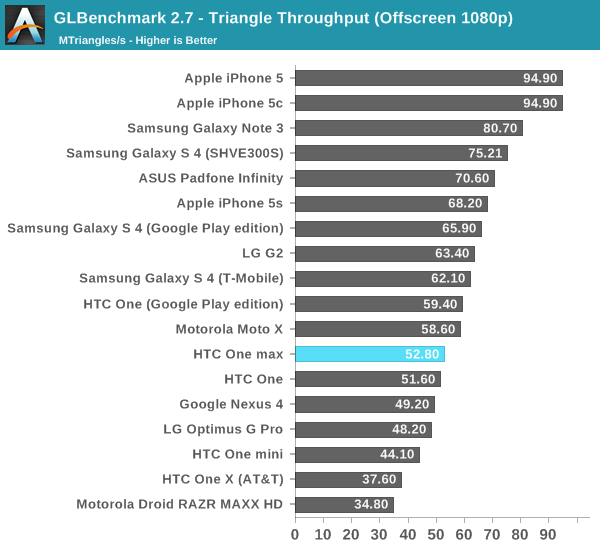
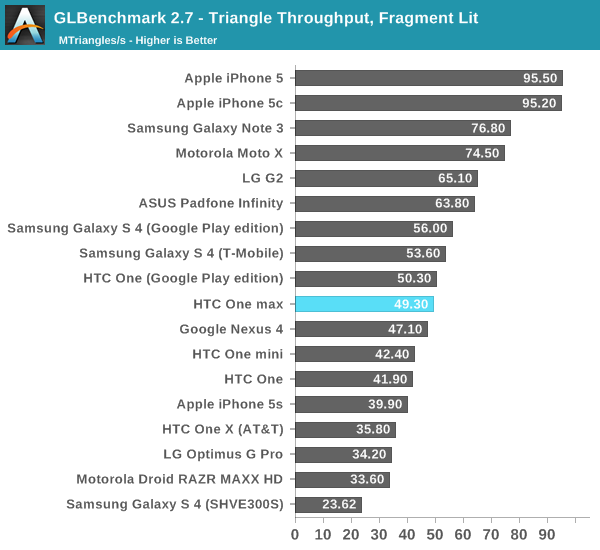
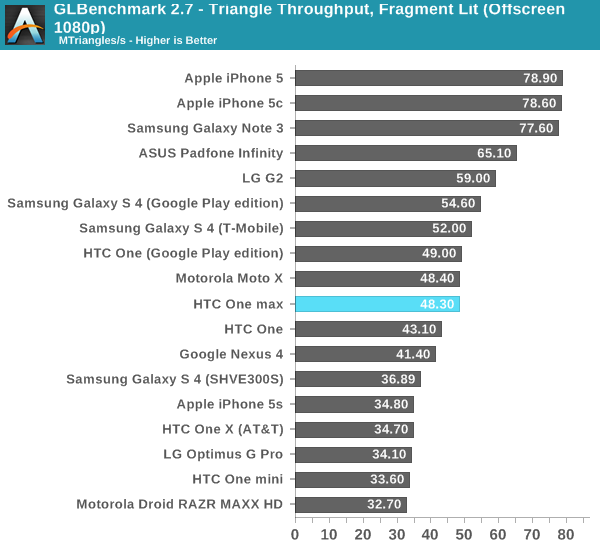
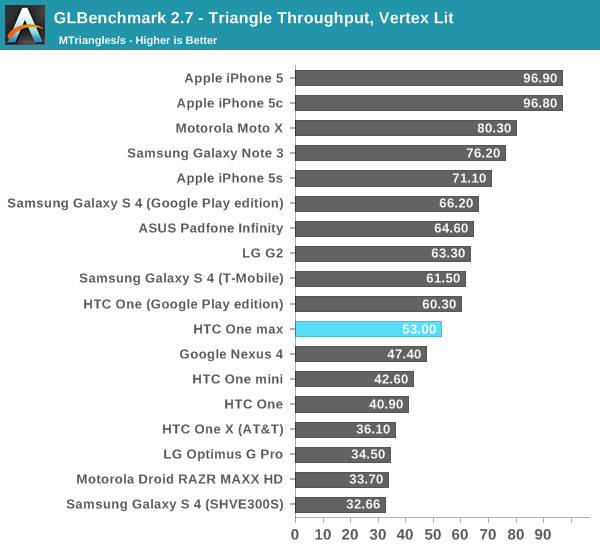
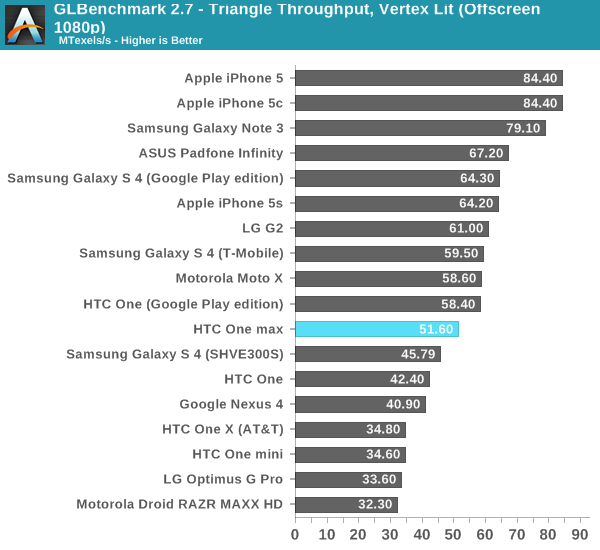
Storage
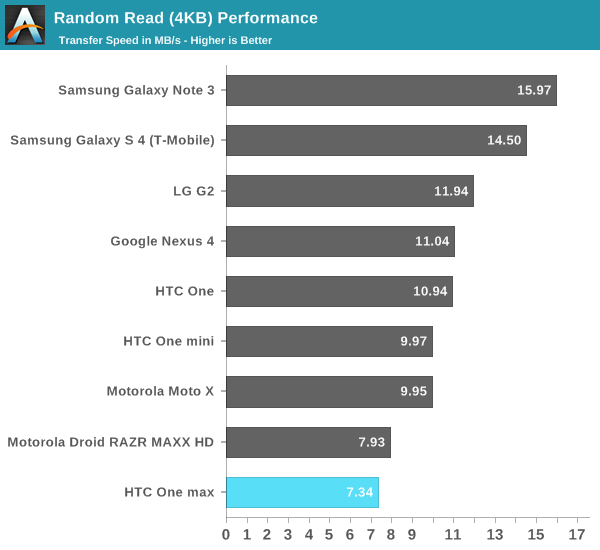
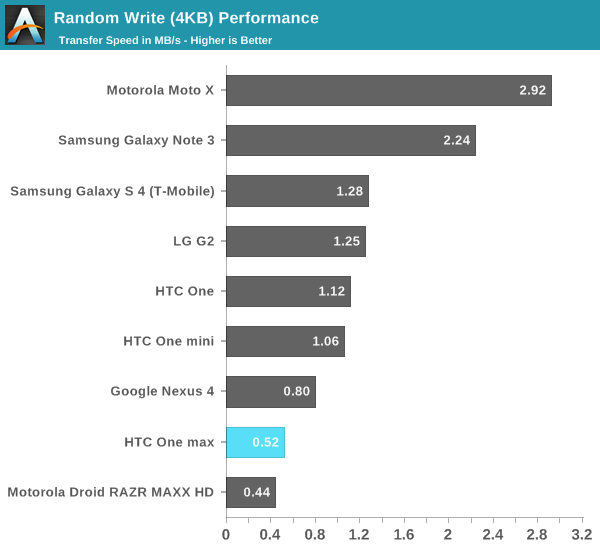
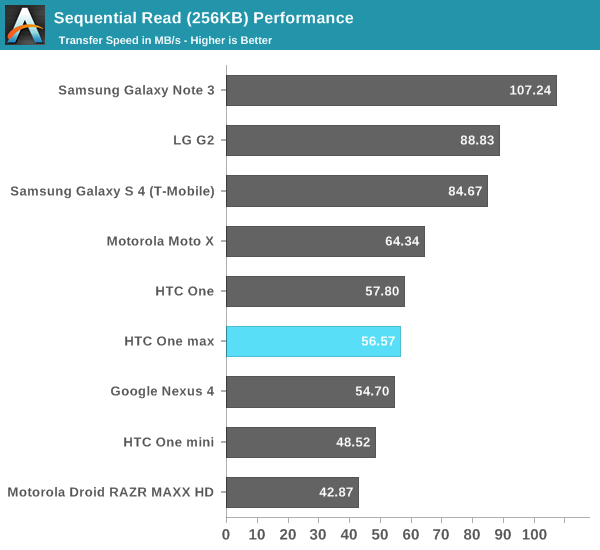
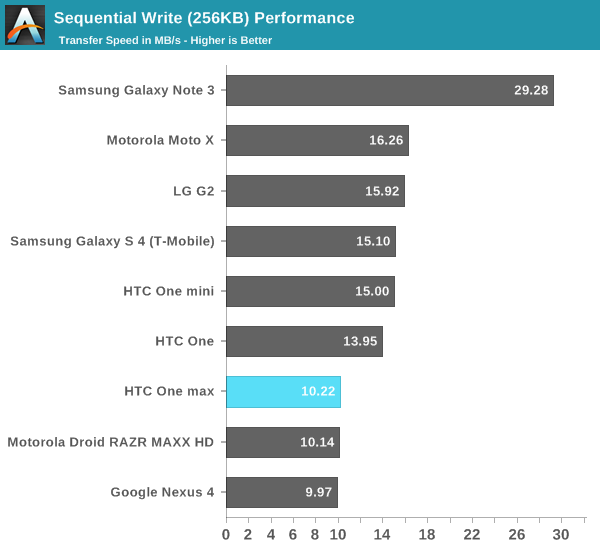
I’m not going to go through all the benchmark results on the One max since again it’s the 1.7 GHz Snapdragon 600 SoC we’re very familiar with at this point. The only oddity is storage performance, where the One max trails in random writes and reads, I'd attribute this to a different eMMC being used. The rest of the results are essentially within the margin of error. I initially suspected that the One max might have a bit more thermal headroom than the One, but this doesn't really seem to play itself out in the results, possibly due to the removable back door.


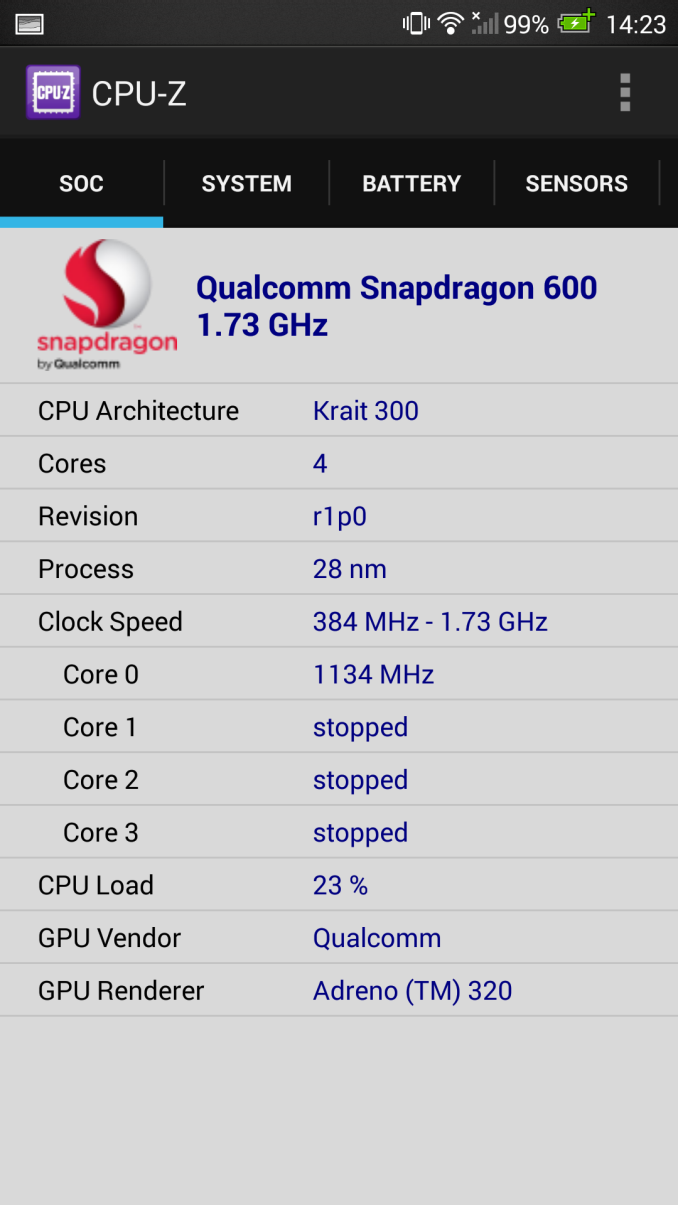
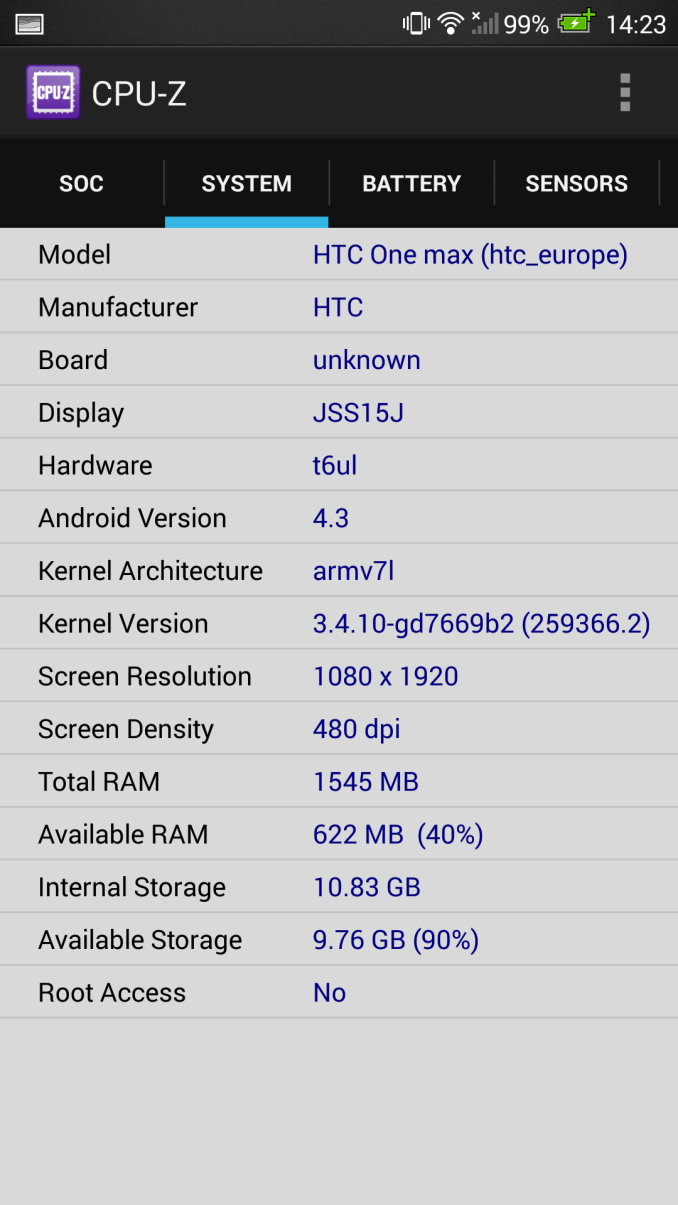








197 Comments
View All Comments
steven75 - Thursday, October 31, 2013 - link
You realize that Google itself dropped SD support from Android, right? Something Brian has mentioned numerous times, yet here you are again making the claim that "Apple is perfection" like a true troll.PC Perv - Tuesday, October 29, 2013 - link
And you have no issue with OEMs charging extra $100 per each incremental storage size? Sure you get free phones and lots other perks so perhaps that is why you are so understanding of the OEMs. But have you thought about this nonsense from consumers' point of view?I am guessing no. Every other pages are filled with the author's worry and concern about OEM's margins or market share. Why do you care? Why should I care about their cost savings? This has been the trend of this site for a long time. Unbelievable amount of corporate favoritism plus unapologetic ignorance on users.
rabidkevin - Tuesday, October 29, 2013 - link
I'm sorry, but you make zero sense.sherlockwing - Monday, October 28, 2013 - link
You can purchase 13000 mAh External battery packs for $37 weighing 0.9lbs, a far better option than a extra battery for GS4.Dentons - Monday, October 28, 2013 - link
And I can purchase 4, 3100 mAh Galaxy Note II batteries for about half that. All 4 together weigh just .47 pounds (54 grams each, 0.11 lbs each)All together, the four of them take up less space than any external battery pack I've ever seen. If I'm only going to be gone overnight, I need only take 1 spare. With all 4 and the battery in the phone, I can usually operate for a solid week without recharging once.
A user replaceable battery is also a hedge against the planned obsolescence of built-in batteries. Batteries wear out, the have a very finite number of cycles. A battery that will no longer hold a charge is one of the leading reasons consumers buy new phones.
User replaceable batteries and micorSD are as much about reducing consumer costs as anything else. It isn't difficult to see why reviewers awash in a torrent of new, free, phones aren't particularly enamored in these features. They don't use phones for 2+ years. They don't pay for the larger memory models. They don't wear out batteries.
chizow - Monday, October 28, 2013 - link
Agree with pretty much everything you've written in all of your replies. The fact that this comment section is dominated by comments disagreeing with Brian's position on microSD should say something, but I doubt it will have any lasting impact on his opinion of the matter.It's a good thing device makers seem to be going in the opposite direction, all I see now are devices adding the functionality.
superflex - Tuesday, October 29, 2013 - link
Alinsky tactics.Attack the messenger when the message is not what you want to hear.
Grow up.
Gadgety - Monday, October 28, 2013 - link
It's funny - when reading negative comments on HTC phones these days I can't help but think it's Samsung sponsored comments (BTW I have a Samsung phone).ddriver - Monday, October 28, 2013 - link
I wish samsung paid me :) Dunno about paid comments, but there sure are a lot of paid reviews, and I don't mean paid by samsung,I think negative comments towards this device are well justified, it goes beyond the reasonable size and hardware is ... previous gen at best. Given all this space to cram components in, this phone should have been much, much better. Alas, htc is no samsung that produces everything and no apple to exploit fanatical brand loyalty, so the only way to keep profit margins decent while keeping the price "reasonable" is to offer cheaper and slightly out-of-date hardware.
Sm0kes - Monday, October 28, 2013 - link
He's not talking about the validity of the criticism, but instead the relentless "shill" type comments that constantly bring up Samsung in every discussion.FYI - Samsung was being investigated by the Taiwan's FTC back in April for paying student "shills" to slam HTC and advocate for Samsung on tech review sites. Google for the link. It's pretty clear Samsung's marketing is pretty scummy.